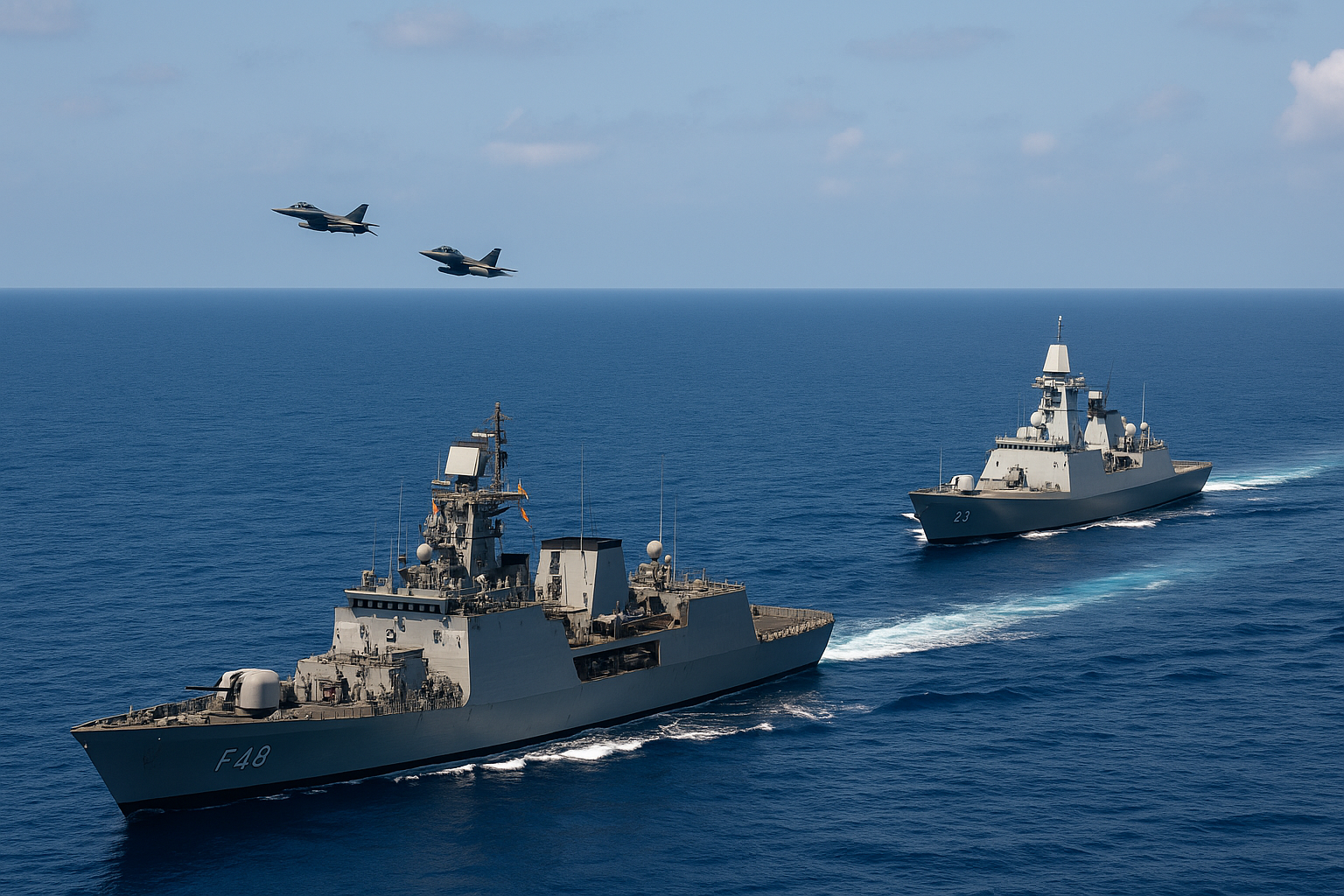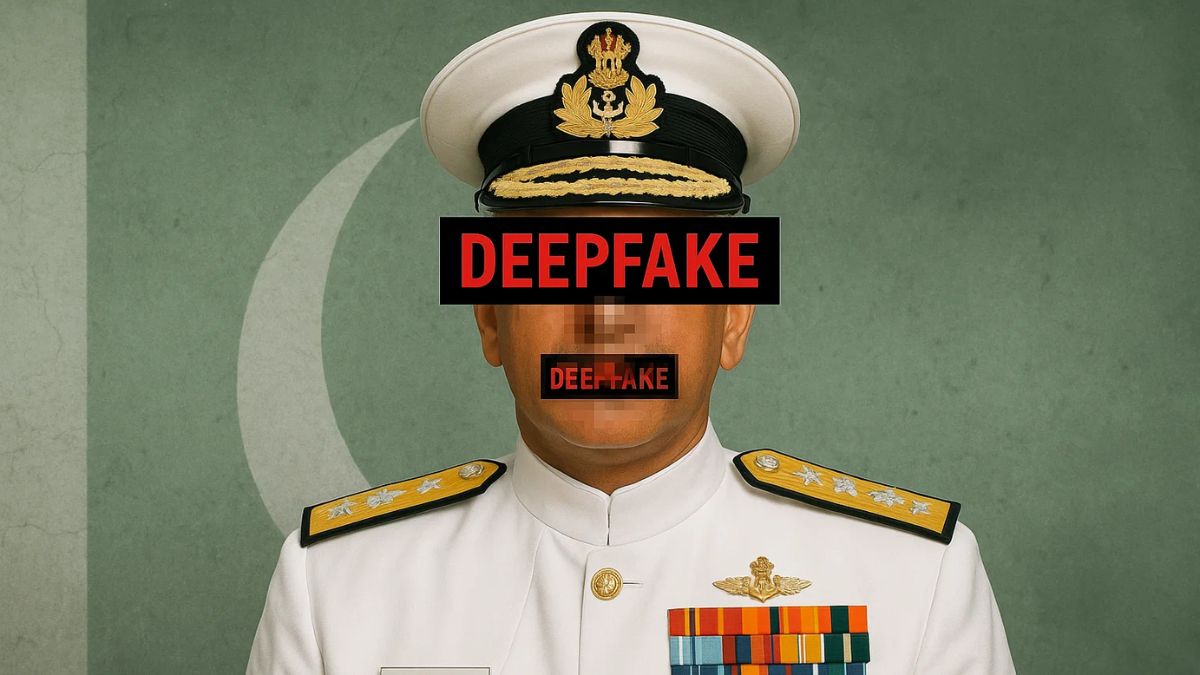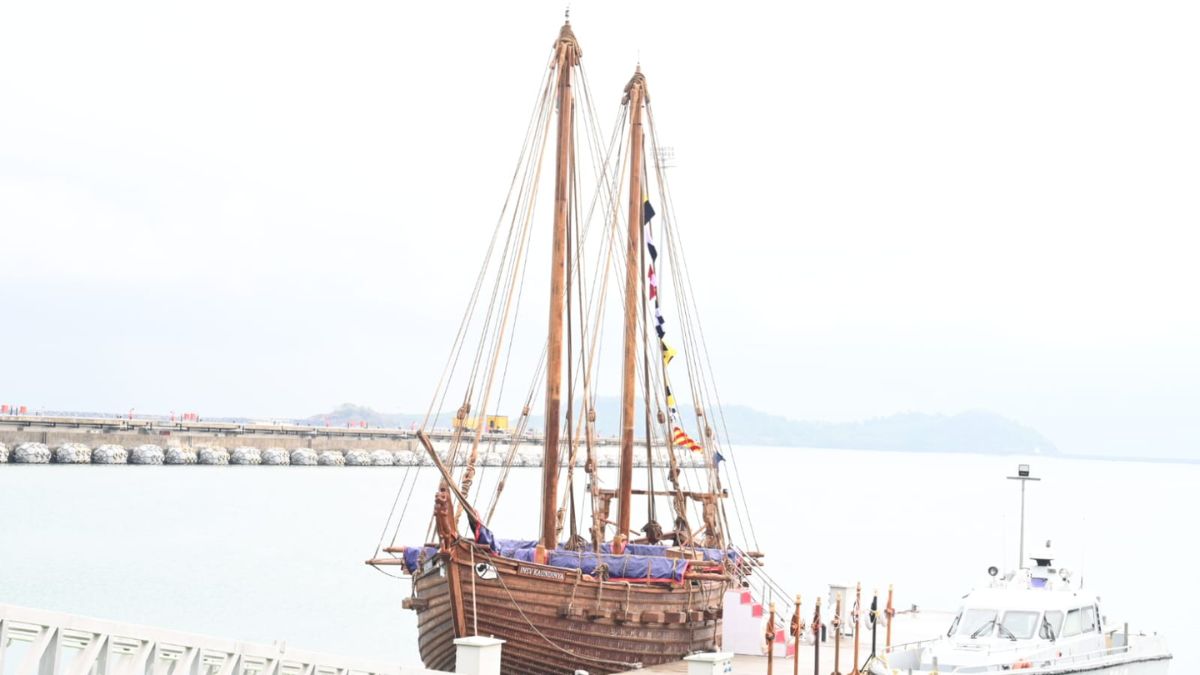India and Singapore Deepen Naval Synergy Amid Rising Indo-Pacific Maritime Stakes

Image Courtesy: AI-generated via OpenAI’s DALL·E
The completion of SIMBEX 2025 between the Indian Navy and the Republic of Singapore Navy (RSN) marks not just the 32nd iteration of this long-standing bilateral maritime engagement but also a strategic statement in a region witnessing sharpening geopolitical contestations.
Conducted from July 28 to August 1, the exercise featured advanced warfare drills in the South China Sea, one of the world’s most contested maritime zones.
What was different in SIMBEX 2025?
This year’s exercise was distinctive in its scale and complexity. The shore phase, hosted at Singapore’s RSS Singapura-Changi Naval Base, laid the groundwork with joint planning, simulator-based training, and Subject Matter Expert (SME) exchanges on Maritime Air Operations and Compliant Boarding Procedures, a nod to the increasingly multifaceted nature of modern naval warfare and maritime security operations.
The sea phase, held in the southern reaches of the South China Sea, brought together key platforms: INS Satpura, a Shivalik-class stealth frigate from India, and RSS Supreme (Formidable-class) and RSS Vigilance (Victory-class) from Singapore, supported by MV Mentor.
Air support from the Republic of Singapore Air Force (RSAF), including F-15SG fighters, S-70B naval helicopters, and Fokker-50 maritime patrol aircraft, added vital multidimensional capabilities.
How does the maritime exercise symbolise strategic signalling?
Beyond the technicalities, SIMBEX 2025 reflects a maturing security partnership that goes beyond ceremonial drills. With India and Singapore commemorating 60 years of diplomatic relations, the exercise also symbolises a political commitment to uphold a free, open, and rules-based maritime order in the Indo-Pacific.
In this light, the timing and location of the sea phase are significant, coming amid increased Chinese assertiveness in the South China Sea and broader concerns about maritime stability.
Notably, this is India’s longest-running uninterrupted naval engagement with any foreign navy, first held in 1994. Over time, SIMBEX has evolved from basic anti-submarine warfare training to include air defence, gunnery, and maritime interdiction operations.
This steady progression showcases both sides’ intent to maintain interoperability and shared situational awareness in complex maritime environments.
What broader context can be drawn from SIMBEX 2025?
The broader context includes Singapore’s unique positioning in Indo-Pacific security architecture. Although not a Quad member, the RSN’s participation in the 2007 Malabar exercise — alongside the Indian, US, Japanese, and Australian navies — underscored its role as a strategic balancer and an early contributor to multilateral naval coordination in the region.
The inclusion of Singapore in Malabar 2007 was seen as a bold signal of strategic alignment amid a rising China. While Singapore has since preferred a more balanced approach, its continued engagement with India via SIMBEX reflects long-term convergence on maritime domain awareness and regional stability.
Is SIMBEX 2025 a barometer for India-Singapore strategic convergence?
In today’s context, SIMBEX complements India’s Act East Policy and aligns with Singapore’s interest in keeping critical sea lanes, especially the Straits of Malacca and South China Sea, open and secure.
The operational synergy seen in SIMBEX 2025 — both at the human and technological levels — adds substance to the bilateral relationship, potentially enabling both navies to respond jointly to non-traditional threats like piracy, trafficking, and humanitarian emergencies.
SIMBEX 2025 is more than a naval drill. It is a strategic barometer of India-Singapore maritime relations and a crucial pillar in the architecture of Indo-Pacific maritime cooperation.







